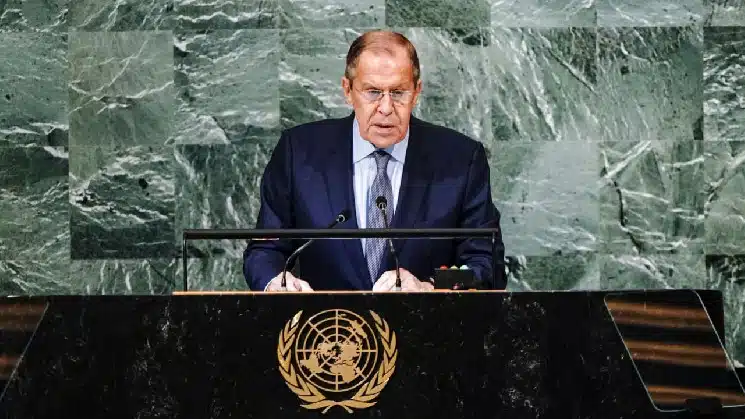Russian Foreign Minister Sergey Lavrov recently addressed the United Nations Security Council and spoke on the growing trend of de-dollarization in international markets. He stated that the shift from the US dollar to national currencies is “unstoppable” and its impact on traditional international institutions, such as the International Monetary Fund (IMF), remains uncertain. According to Lavrov, the US government is largely responsible for the market shift due to the extensive set of sanctions on the Russian Federation. Despite these sanctions, Lavrov claimed that the move toward national currencies and digital currencies cannot be stopped.
The current shift in international markets away from the US dollar is due in part to the rise of digital currencies, such as Bitcoin and Ethereum, which are increasingly being used for cross-border transactions. These digital currencies offer several advantages over the US dollar, including lower transaction fees, faster transaction times, and greater privacy for users. Moreover, digital currencies are not controlled by a central authority, such as a government or central bank, which makes them less susceptible to political pressures and more appealing to some countries and businesses.
One of the main drivers behind the trend of de-dollarization is the US government’s use of economic sanctions as a foreign policy tool. According to Lavrov, the US has used its economic dominance to impose its will on other countries, leading many to seek alternatives to the dollar for international trade and settlement. The ongoing trade war between the US and China, for example, has prompted both countries to explore other options for trade settlement, such as using their own national currencies.
Another factor contributing to the growing trend of de-dollarization is the growing influence of emerging markets, particularly the BRICS countries – Brazil, Russia, India, China, and South Africa. These countries are increasingly collaborating on trade, investment, infrastructure, and other economic initiatives, which could help to reduce their reliance on the US dollar. In recent years, they have been promoting the use of their national currencies in international trade and settlement, as well as exploring the possibility of creating a unified BRICS currency.
Some experts and analysts, such as former White House economic advisor Joseph Sullivan, have argued that the rise of a BRICS currency or other alternatives to the dollar could contribute to the slow erosion of the dollar’s dominance in international markets. However, the US dollar remains the world’s primary reserve currency, and it will likely continue to play a significant role in international finance for the foreseeable future.
Despite the growing trend of de-dollarization, there are several factors that could potentially slow or reverse the trend. For example, the US dollar is still widely perceived as a safe-haven currency due to its stability and the strength of the US economy. Additionally, many countries, businesses, and individuals continue to rely on the dollar for international trade and financing. Furthermore, the US government has a strong interest in maintaining the dollar’s status as the global reserve currency and may take steps to defend its dominance in international markets.
In conclusion, the trend of de-dollarization in international markets represents a potentially significant shift in the global financial landscape. While it is unlikely that the dollar will be entirely replaced by national currencies or digital currencies in the near future, the growing influence of these alternatives suggests that the dollar’s dominance may be gradually eroding. This shift could have implications for traditional international financial institutions such as the IMF and World Bank, as well as for the US government and its ability to wield economic power through the use of economic sanctions. Ultimately, the future of the international financial system, and the role that the US dollar plays within it, remains uncertain.


